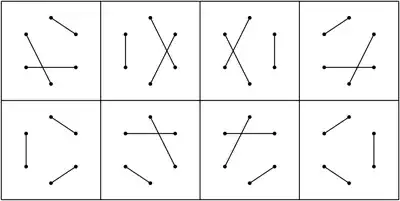If 2n people are sitting at equally spaced intervals around a circle. How many ways can they form n pairs if no two persons seated directly opposite each other can form a pair?
What I did was draw some examples for low values of 'n' and also tried to see it as a graph on 2n vertices where there is no edge between opposite vertices. However, I have not come to a revelation. Any help would be appreciated.
